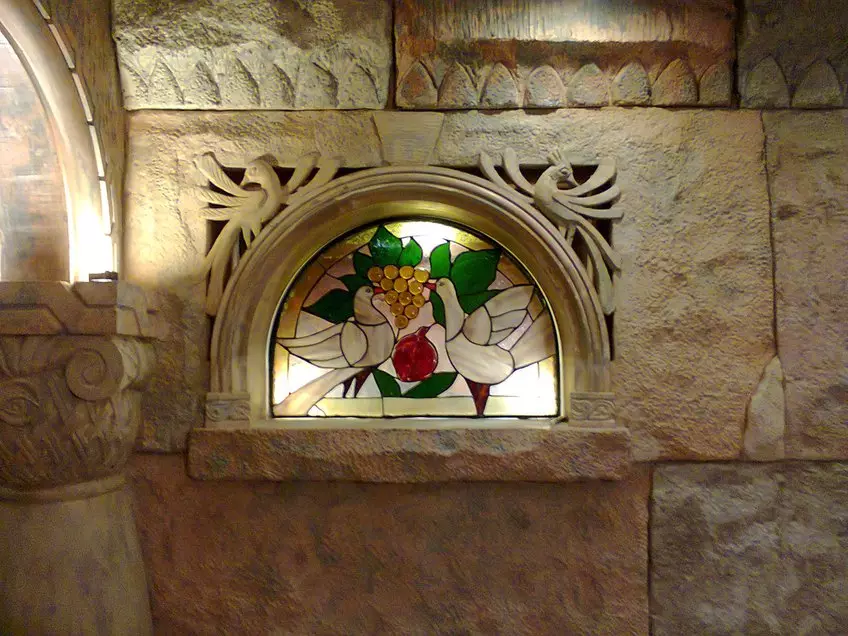
Each person wants to make her accommodation beautiful, cozy and make original design solutions. Stained glass - one way to make a house bright and memorable.
Previously, his manufacture was expensive and, mostly, they were decorated with castles, rich estates and temples. Now modern technologies allow you to create your own unique stained glass window without ordering it from the master and applying inexpensive materials.
To create a stained glass window with your own hands, you will not need special knowledge and skills, and materials, tools and equipment have quite reasonable prices. Using a tool that is almost in every home and a small set of consumables sold in building stores, you can create a unique masterpiece.
The most close-up to the classic style and won great popularity in modern design is the stained glass window Tiffany.
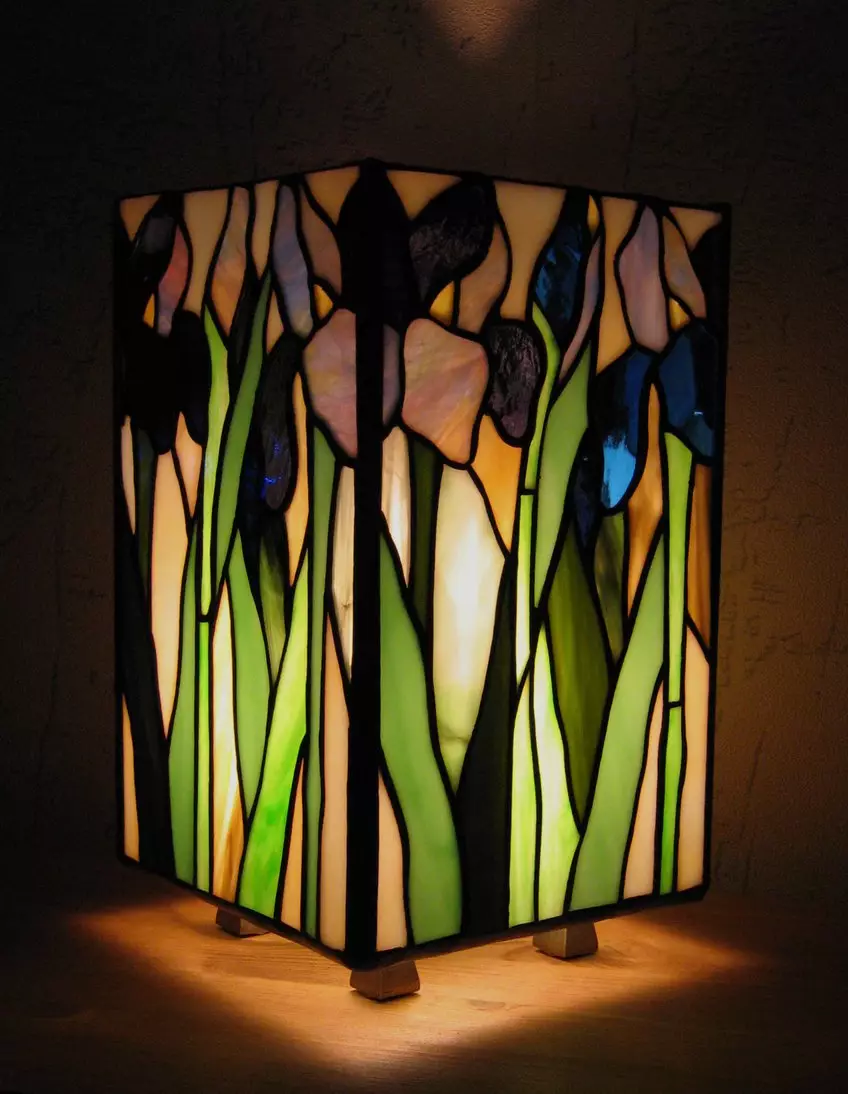
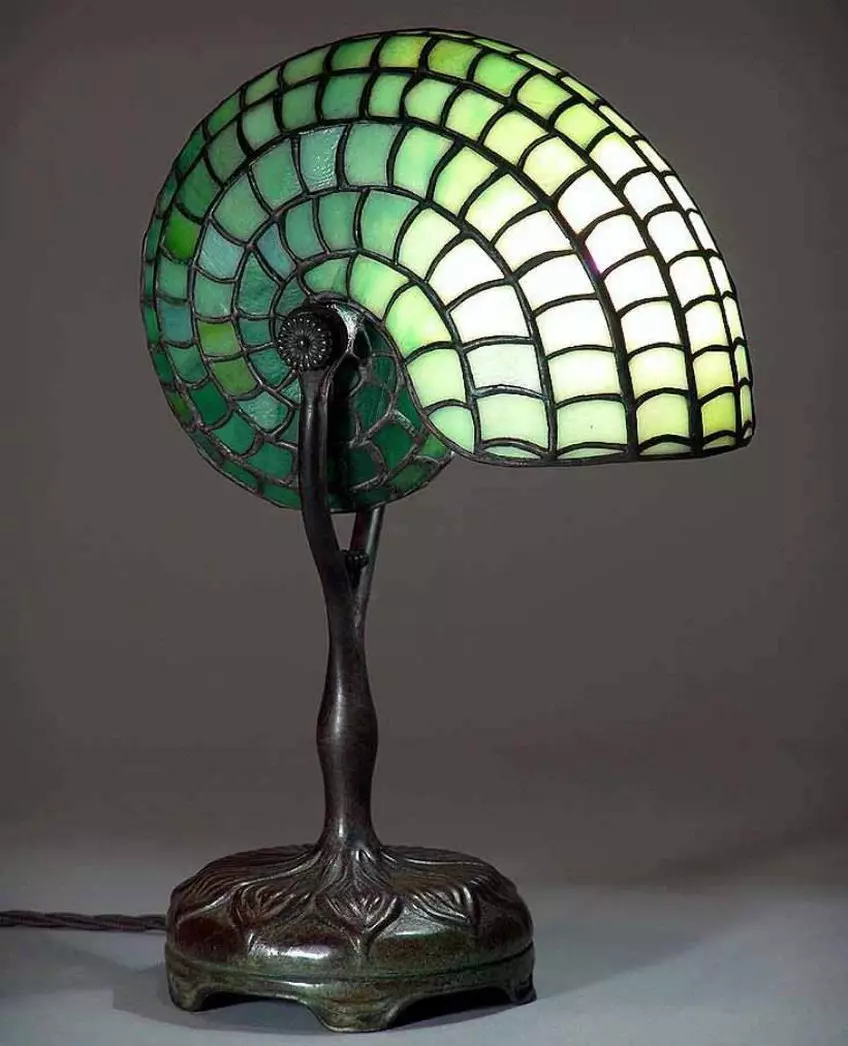
How to start making the stained glass in Tiffany?
Create a sketch of stained glass. We need two copies on dense paper in a natural value (you can use the copier). Number all the details of the future drawing in parallel on both copies.Scissors for blank templates cut one of the sketches. Such scissors have three blades, the mean of which removes the strip of 1.27mm wide. This distance is designed to the thickness of the copper foil (folia).
The obtained cardboard billets impose on the glass of the corresponding colors. Circle a thin marker of the workpiece and numb.
Diamond glass cutter Cut all the elements of the future stained glass in Tiffany.
Sketch
- Creating a sketch of his stained glass, pay attention to future seams: the more T-shaped connections, the stronger will be your masterpiece
- Take into account the proportions. If the stained glass elements are small or width, then the seams should be thin, otherwise the work will look rough, and the foil will block most of the glass
- If the seams are conceived wide, then avoid narrow parts and sharp corners in the stained glass, otherwise there is overheating and damage to the glass when soldering
- If the stained glass has an elongated up, a narrow shape, then we advise you to plan several vertical lines in the sketch. This method will make the structure of stained-glass
- In order to collect the stained glass window it was convenient, the sketch is placed inside the frame, and then begin to spread the prepared glasses. The layout starts from the corner. The accuracy of the layout depends on how neatly you weld the frame to the sketch
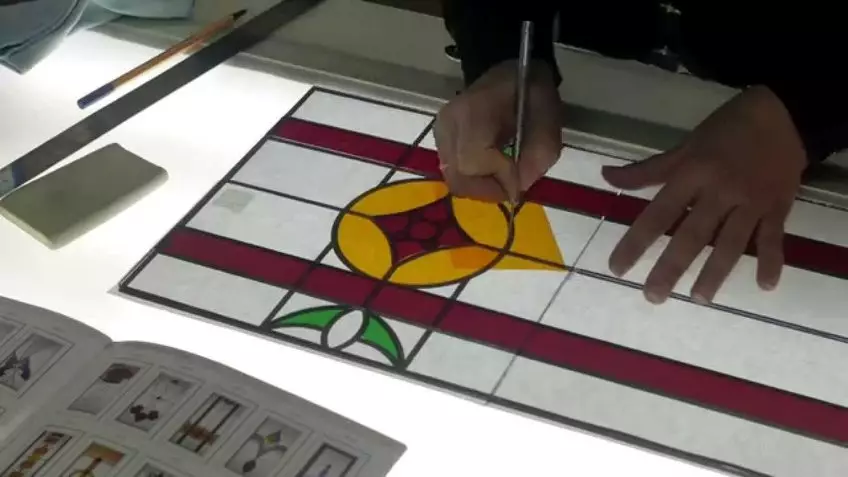
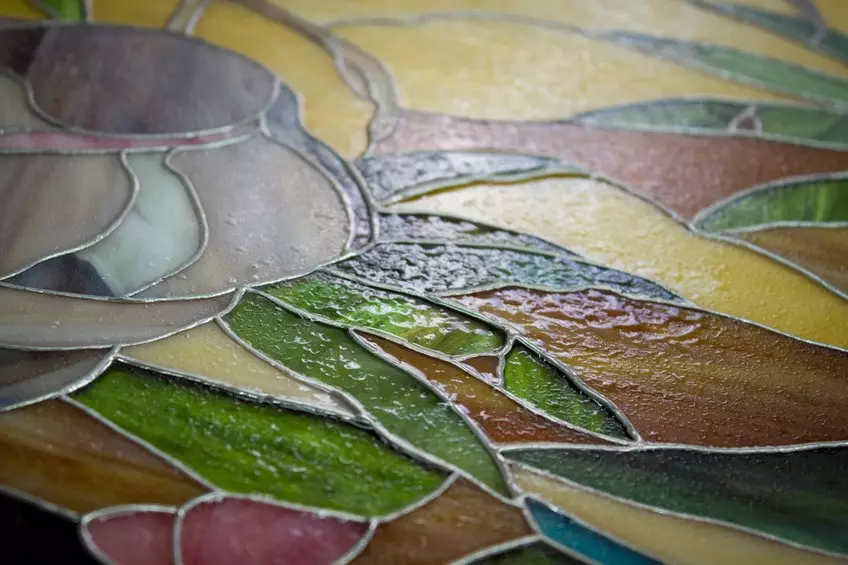
Tip1 : If irregularities were formed when the glass was formed, they can be broken with nipples, and then all parts are exhausted on a grinding bar.
Tip2. : So that the glass fragments do not fly to the sides, it is better to do this procedure in water tanks, immersing the workpiece there. The sniffing occurs until each item does not match the size and sketch form.
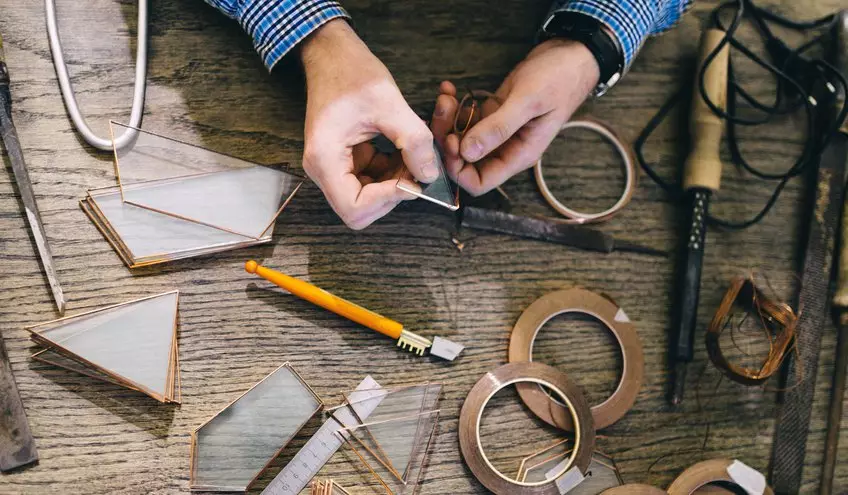
We proceed to winding the foley edges of glass blanks. Special copper foil looks like a tape with one adhesive side. Attach it in the center to the edge of the glass and completely wrap the entire blank, bending on both sides
The edges of the bend must be the same size on both sides for the strength and aesthetic beauty of the seam
1. Foil Foils Send to glass with a wooden blade (solid materials scratched and rubbed the patina).
2. Stick the sketch with glue or transparent tape to a smooth surface, and along the edge of the drawing, the planks, forming a frame for the elements of the stained-glass mosaic, are not shifted when assembling and soldering.
3. We fold all the elements by the template into a single composition. All parts of the future stained glass must lie freely with a small gap, so that they do not burst with high temperatures when soldering.
4. Customize all parts in size into a single composition.
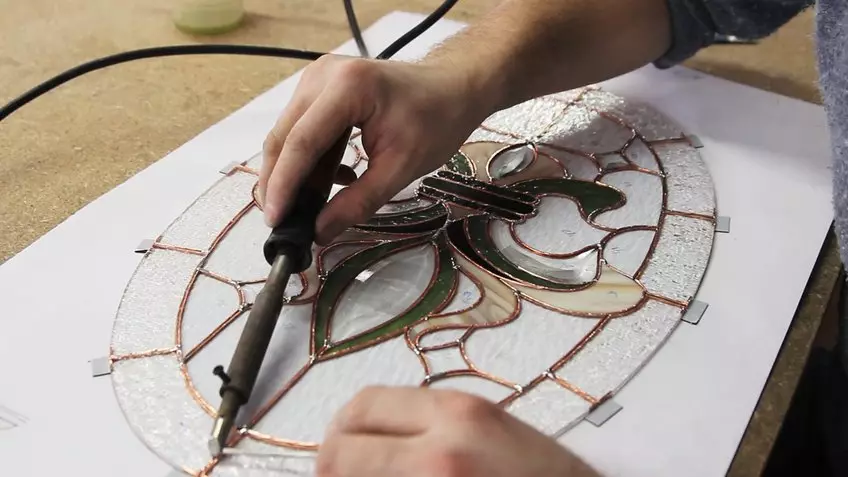
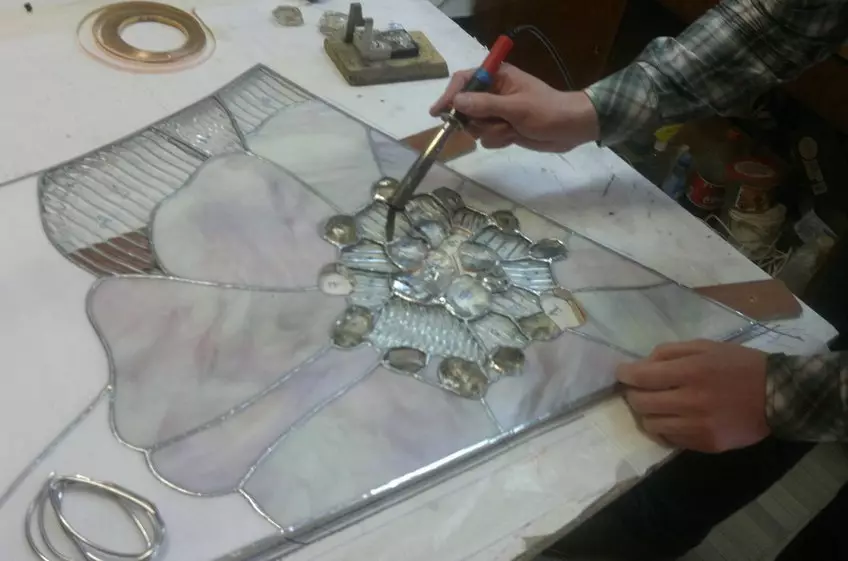
5. Process all the seams with a flux to remove all oxides from the surface of copper and so that the tin put it with a smooth seam. It is best to use solder fat or liquid fluxes that are applied with a brush.
6. The elements of the stained glass window of Tiffany are soldered along the inner and outer edges of a well-hot, thin soldering iron. At the same time, you must have one continuous seam, which completely covers the entire visible part of the copper foil, including the outer edges of the composition.
7. Thoroughly wipe all seams of flux residues after spike to avoid tin oxidation. Use any detergent for it.
Calculation of patina on the seams is the final stage in the manufacture of Tiffany stained glass. A black or copper-colored patina is used more often, which is rubbed into all seams with a cotton swab. Surplus that fell on the glass should be immediately removed with a sponge.
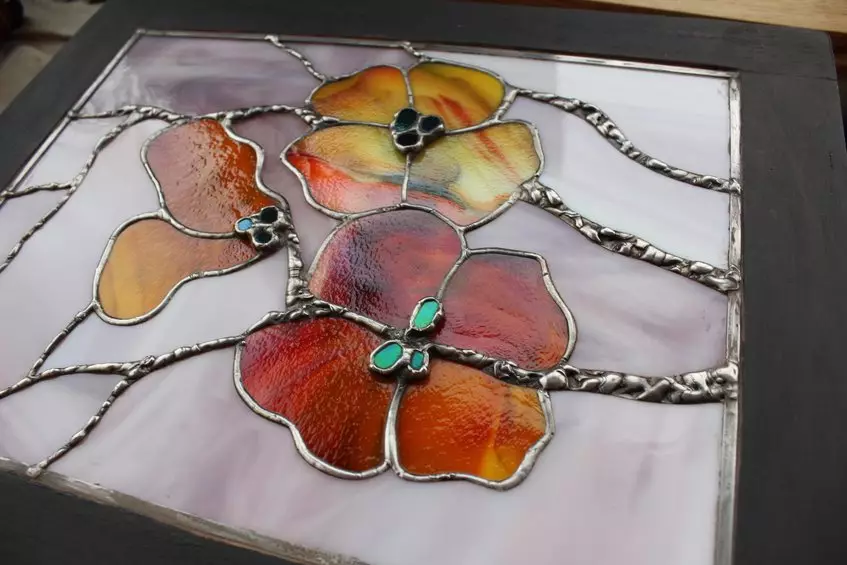
Tips for I. Preparation of stained glass
Tip 1. Any stained glass has its most valid dimensions. They are different for ceiling, door or window stained glass windows. If your product suggests larger dimensions, the stained glass pattern should be divided into several fragments.
Tip 2. Production and assembly of elements of incorrect, curvilinear forms, with the help of a matrix, on which we apply the stained glass sketch. After laying out the prepared details on the matrix, make sure that they are free. So you will save the glass from overheating and cracking while soldering.
The width of the seams between the elements of the stained glass depends on your requirements for its strength and artistic design. Often seams have different thickness, which gives the product an original view
Tip 3. Stained glass windows or concave forms (plafones for lamps, chandeliers) make on special forms that exactly repeat the configuration and dimensions of the future stained glass. This approach will greatly facilitate work. The form (blank) can be pulled out from plaster or made of wood.
Tip 4. Cut stained glass elements need, without taking the glass cutter from the canvas, from beginning to end. Finishing the line, reduce the pressure on the glass cutter. This will help avoid chips.
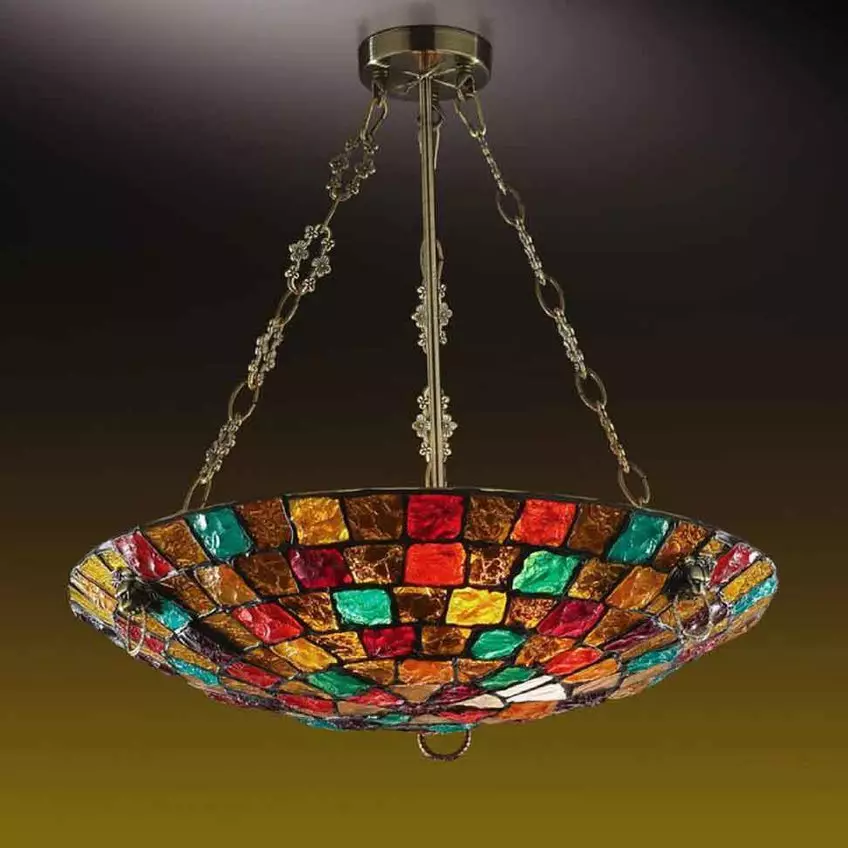
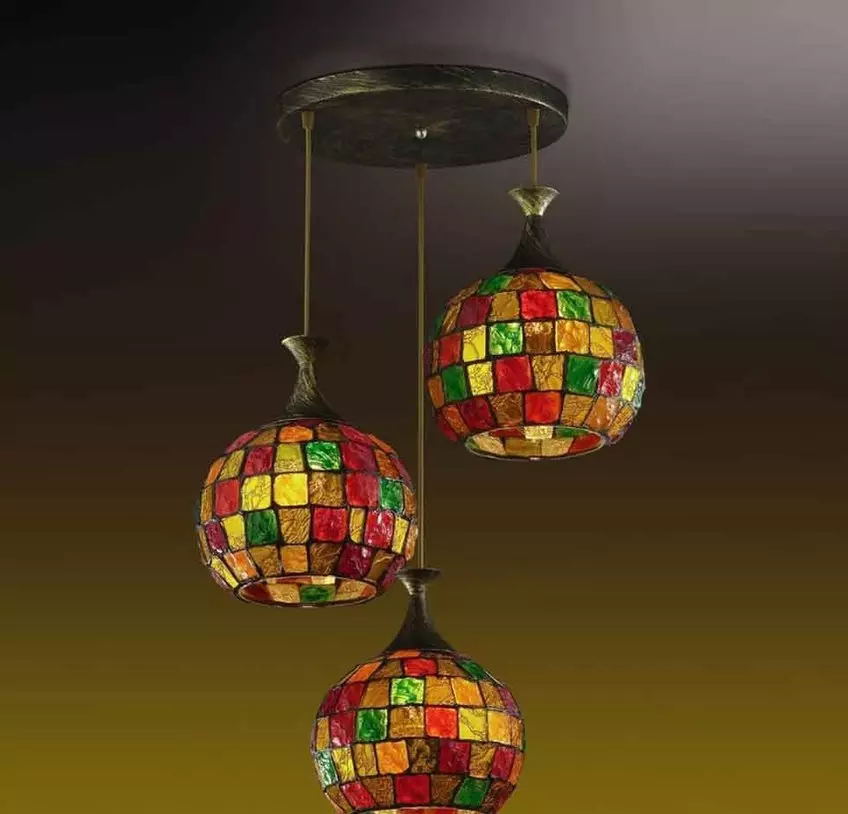
Tip 5. All defects and irregularities that have arisen during the soldering of the stained glass, delete immediately. It will take some time and strength, and the product will look much more careful.
Tip 6. If there is a thick glass at your disposal, so that the incision on it is neat, it is necessary: to cut through the glass cutter of the stained glass element, it is easy to sprinkle on the opposite side along the cut line, break the glass by the resulting cracker
Work with glass
Carefully pick the glass for your stained glass window. Lighted with solar or artificial light, colored glasses will have various shades and tones. Also matter the thickness and transparency of the glass.
You can use products with stained glass windows of Tiffany not only indoors, but also on the street, for registration of entrance groups. Such stained glass windows are not afraid of temperature drops, and all elements are easily replaced when damage occurs. Staining glass will not fade, does not fade in the sun.
It is easy to care for stained glass: clean detergents (even those that include solvent and alcohol). This is explained by the fact that the dye is inside the glass, and not on the surface.
Try to avoid sharp corners in stained glass, deep cuts and narrow items. The best option will be divided by a complex stained glass fragment, more simple. This will avoid cracks and damage during operation. Such an approach absolutely will not spoil your work, and also will give the opportunity to enrich the stained-glass windows with additional colors.
Glass leaf has a "facial" and "involne" side. To facilitate labor, all manipulations are spent with a smooth side, which will be "wrong" of your product.
Prompt: Often, large workshops and firms sell marriage, battle and remnants of glass after performing their work. The price of such glass is usually significantly reduced. You can save a completely decent amount by receiving high-quality glass for your stained glass and enriching the tints palette.
